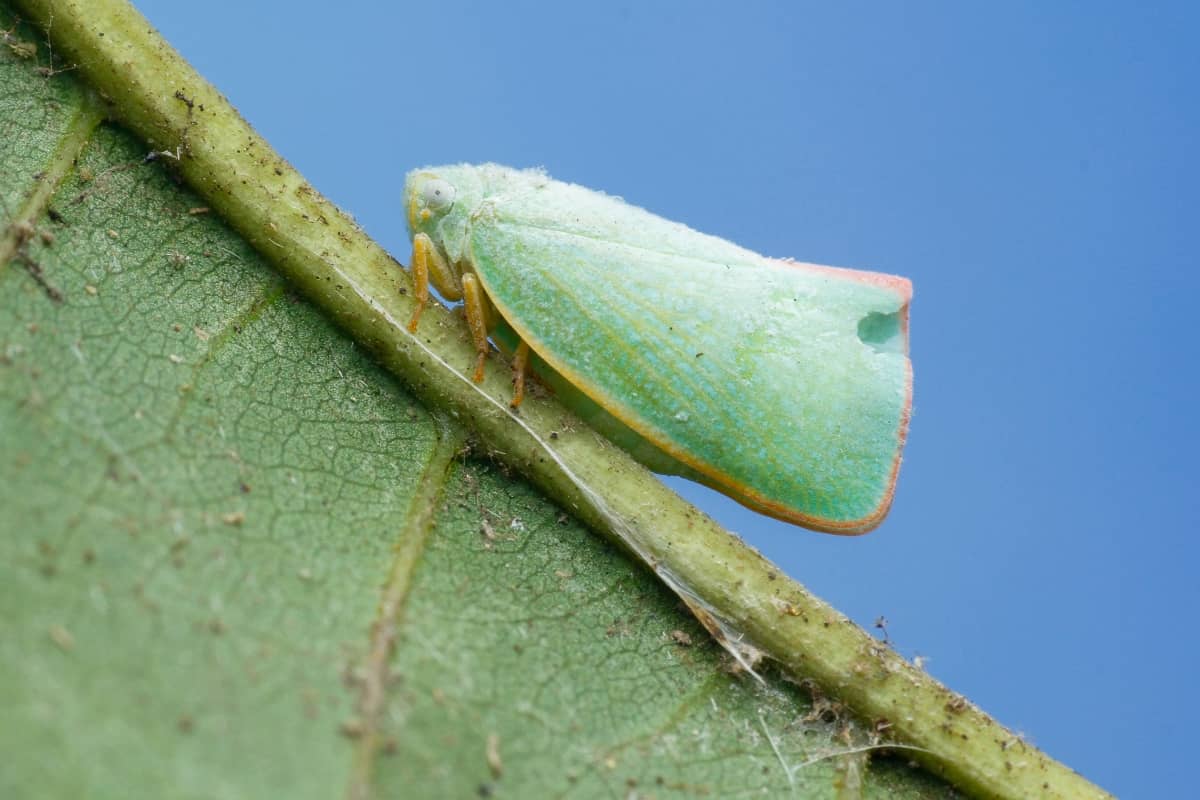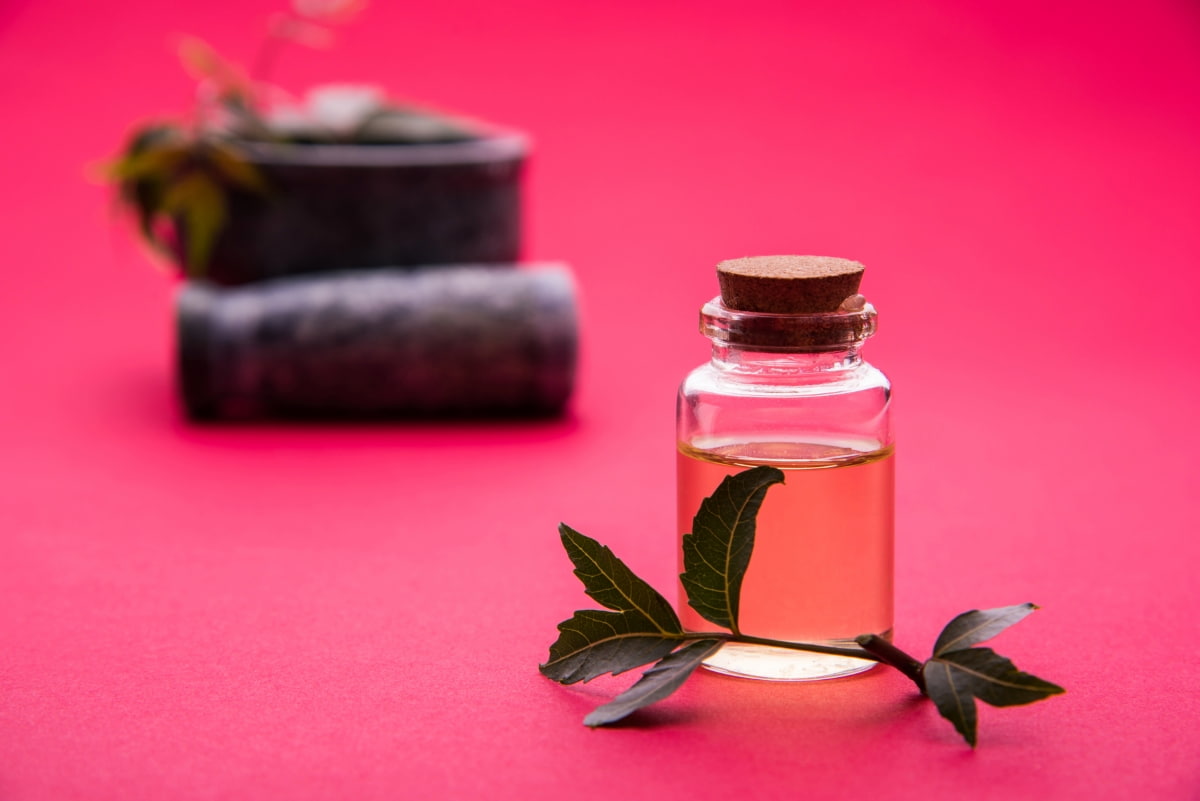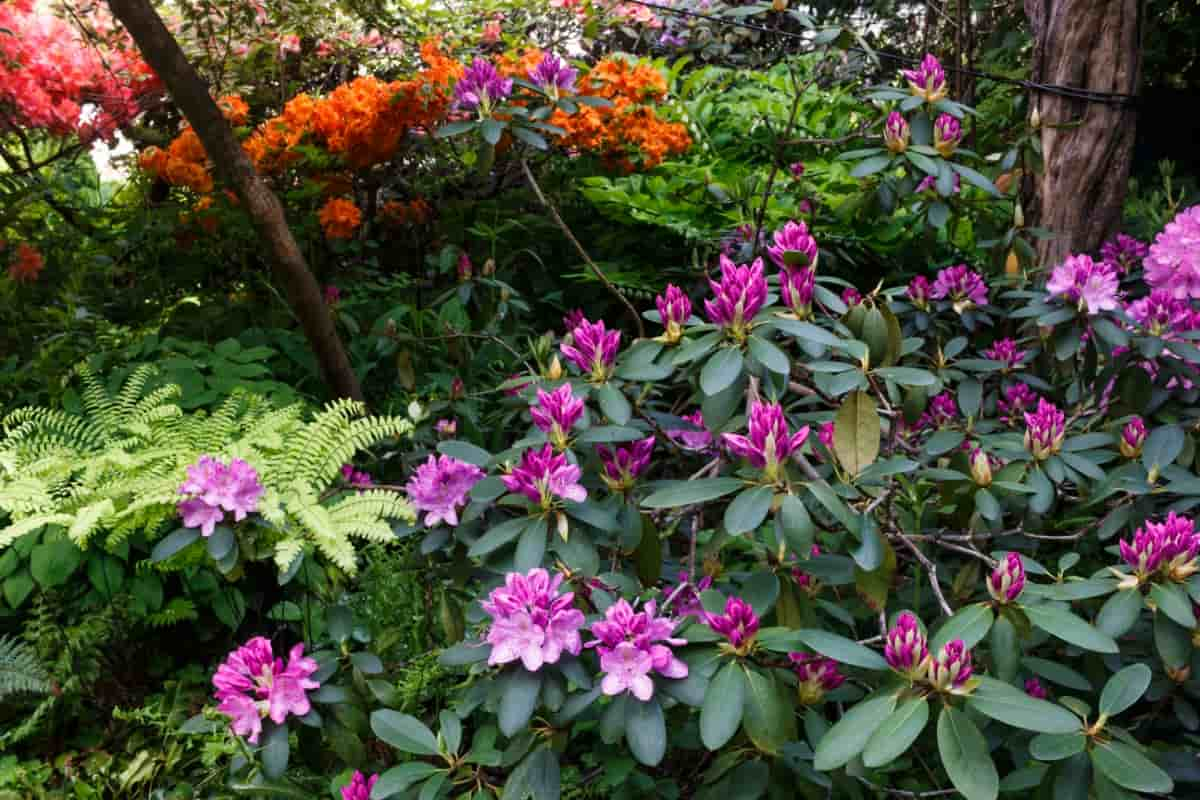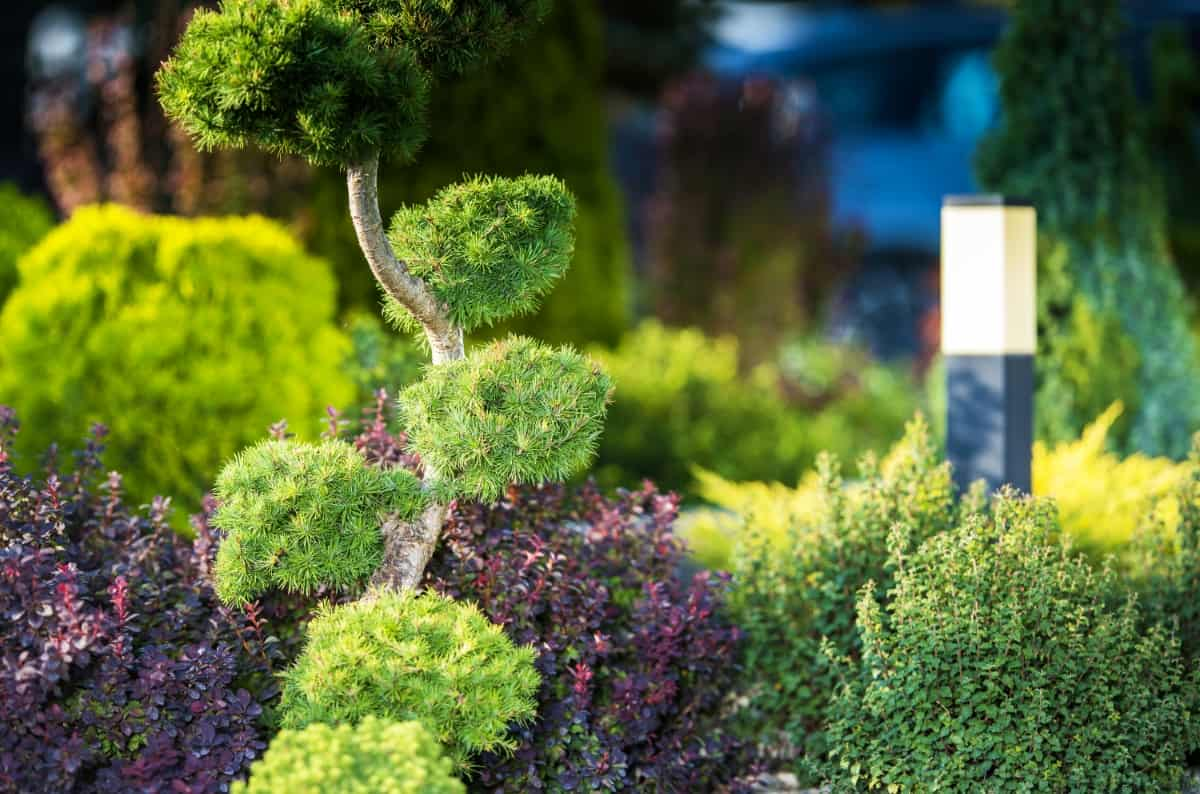This guide provides a comprehensive guide on using neem oil to control leafhoppers on ornamental shrubs. Leafhoppers can damage the aesthetic appeal of your garden by puncturing plant tissues and feeding on sap. However, neem oil, a natural extract from the neem tree’s seeds, can be a powerful solution to control leafhoppers and improve your garden care game.

Neem Oil to Control Leafhoppers on Ornamental Shrubs
A Natural Solution for Ornamental Shrub Leafhopper Control with Neem Oil
Leafhoppers on attractive plants can be naturally controlled using neem oil. This environmentally friendly solution comes from the seeds of the neem tree (Azadirachta indica). It can stop leafhoppers from growing, keep them away, and stop them from feeding. Unlike chemical alternatives, neem oil guarantees environmental sustainability and the maintenance of beneficial insects.
Moreover, because of its organic makeup, it has fungicidal and general plant health-promoting properties. Gardeners may achieve a sustainable and natural balance between efficient pest control and ecological responsibility by using neem oil as a leafhopper control strategy. This will allow for the growth of vivid ornamental shrubs.
A Step-By-Step Guide to Effectively Manage Leafhoppers on Ornamental Shrubs with Neem Oil
Identification of Leafhopper Infestations
- Look for stippling, discoloration, or “hopper burn” on leaves.
- Utilize a hand lens to spot small, wedge-shaped leafhoppers.
Preparation of Neem Oil Solutions
- Mix concentrated neem oil with water and mild detergent.
- Follow product instructions for proper dilution ratios.
Application Timing and Frequency
- When leafhoppers are most active, use neem oil in the early morning or late evening.
- Start treatments with low leafhopper populations and repeat every 7-14 days throughout the growing season.
Benefits of Neem Oil
- Acts as a fungicide, addressing powdery mildew and black spots.
- Promotes overall plant health and is environmentally safe.
Thorough Coverage for Efficacy
- Apply neem oil to upper and lower leaf surfaces and stems.
- Rotate neem oil with other organic pest control methods to prevent resistance.
Integrated Pest Management Strategies
Combine neem oil with cultural practices, biological controls, and regular monitoring for a holistic approach.
Benefits of Neem Oil for Controlling Leafhoppers on Ornamental Shrubs
- Multifaceted Pest Control: Neem oil is a natural pesticide that effectively controls leafhoppers on ornamental shrubs.
- Fungicidal Properties: Beyond its insecticidal effects, neem oil acts as a fungicide, addressing common issues like powdery mildew, black spots, and other fungal diseases.
- Promotes Plant Health: Neem oil enhances overall plant health by encouraging growth and strengthening the plant’s natural defenses.
- Eco-Friendly Solution: Organic neem oil is environmentally friendly and does not harm beneficial insects, ensuring a balanced ecosystem.
- Safe for Pets and Wildlife: The non-toxic nature of neem oil makes it safe for pets, wildlife, and the environment, providing an eco-conscious alternative to chemical pesticides.
- Reduced Chemical Exposure: Choosing neem oil reduces the need for synthetic chemicals, minimizing the risk of chemical exposure for both gardeners and the surrounding environment.
In case you missed it: How to Control Bay Leaf Pests Naturally: How to Get Rid of Them with Natural and Organic Treatment

How to Identify Leafhopper Infestations on Ornamental Shrubs Before the Neem Oil Application
Effective pest control on ornamental shrubs requires identifying infestations of leafhoppers. Look for symptoms like stippling and a feeding-induced pattern of microscopic, light-colored dots on leaves. Check the undersides of the leaves for nymphs, which are tiny adult replicas. Watch out for the emergence of honeydew or leafhopper feces, which attract ants and promote the spread of sooty mold.
Browning or yellowing of the leaves and twisted growth may also be signs of leafhopper activity. Keep a close eye on your plants, especially growing ones, to spot pests early. This proactive strategy guarantees prompt neem oil intervention, averting significant harm to decorative bushes.
Preparation of Neem Oil Solutions for Leafhopper Control on Ornamental Shrubs
Preparing neem oil solutions for leafhopper control on ornamental shrubs is crucial for effective pest management. Mix concentrated neem oil with water and a mild detergent to create an optimal solution. The detergent aids in emulsification, ensuring uniform coverage on plant surfaces.
Follow product instructions for specific dilution ratios, typically 1-2 teaspoons of neem oil per quart of water. Thoroughly blend the mixture and transfer it to a spray bottle for application. This preparation maximizes neem oil efficacy and minimizes the risk of adverse effects on plants. Applying this solution to both upper and lower leaf surfaces and stems enhances its effectiveness in controlling leafhoppers.
When and How Often to Apply Neem Oil for Leafhopper Management on Ornamental Shrubs
For optimal leafhopper management on ornamental shrubs, apply neem oil early in the morning or evening when leafhoppers are most active. Initiate treatments when leafhopper populations are low, typically at the start of the growing season. To maintain effective control, repeat the application every 7-14 days throughout the growing season.
Consistent and timely application ensures that neem oil disrupts the leafhopper life cycle, preventing reinfestations and promoting the health and beauty of ornamental shrubs. Adjust the frequency based on the severity of infestations, always adhering to product guidelines for a balanced and sustainable approach.
Best Practices for Maximizing Neem Oil Efficacy Against Leafhoppers on Ornamental Shrubs
Thorough coverage is paramount to maximize neem oil efficacy against leafhoppers on ornamental shrubs. Apply the neem oil solution evenly on the upper and lower leaf surfaces, ensuring complete saturation. Rotate neem oil with other organic pest control methods, such as insecticidal soap or introducing beneficial insects, to prevent the development of resistance in leafhopper populations.
Additionally, consider the application timing, choosing early morning or late evening when leafhoppers are most active. This holistic approach, combined with proper application techniques, enhances the effectiveness of neem oil, providing a sustainable and eco-friendly solution for optimal leafhopper control.
Integrated Pest Management Strategies with Neem Oil for Leafhopper Control on Ornamental Shrubs
Integrated Pest Management (IPM) strategies with neem oil for leafhopper control on ornamental shrubs involve a multifaceted approach. This includes incorporating cultural practices like proper pruning, maintaining adequate plant spacing, and enhancing soil health.
In case you missed it: How to Use Neem Oil for Orchid Care: A Natural and Organic Solution for Orchid Pest Control

Biological controls, such as introducing natural predators like ladybugs, are synergistically employed. Regular monitoring of leafhopper activity and timely neem oil applications is pivotal. by combining these elements, gardeners create a holistic and sustainable solution, minimizing the reliance on chemical pesticides while fostering a balanced and thriving ecosystem for ornamental shrubs.
Neem Oil Usage Precautions in Leafhopper Control for Ornamental Shrubs
When using neem oil for leafhopper control on ornamental shrubs, observe essential precautions for optimal results. Wear protective clothes, such as gloves and eye protection, to prevent skin and eye irritation during application.
Apply neem oil during moderate temperatures, avoiding extreme conditions. Ensure the plant’s compatibility by conducting a small patch test before widespread use, especially on sensitive varieties. Use caution with the concentration, as overapplication may lead to oil buildup on plant surfaces. adhering to these precautions enhances the safety and effectiveness of neem oil, providing a natural and eco-friendly solution for managing leafhoppers on ornamental shrubs.
Evaluating the Effectiveness of Neem Oil Treatment for Leafhopper Control on Ornamental Shrubs
Evaluating the effectiveness of neem oil treatment for leafhopper control on ornamental shrubs involves closely monitoring the reduction in leafhopper populations and assessing the overall health of the plants. Regular observations should be made, noting signs of diminished stippling, discoloration, or other leafhopper-induced damage.
Additionally, tracking the frequency and severity of reinfestations over time provides valuable insights into the sustained efficacy of neem oil. Gardeners may maintain detailed records, including application dates, weather conditions, and any observed changes in leafhopper activity, to make informed decisions and fine-tune their neem oil treatment approach for optimal results.
Frequently Asked Questions on Using Neem Oil to Control Leafhoppers on Ornamental Shrubs
Can Neem Oil Harm Beneficial Insects?
Neem oil is selectively toxic to certain pests like leafhoppers while being safe for beneficial insects like ladybugs and bees.
What is the Ideal Concentration Of Neem Oil For Leafhopper Control?
Follow the recommended dilution ratios on the neem oil product label. Typically, a 2% solution is effective for pest control.
In case you missed it: Neem Oil for Controlling Whiteflies in Your Garden: A Natural and Organic Solution

Conclusion
Neem oil isn’t just a solution; it’s your garden’s guardian against leafhopper invasions. With its step-by-step insights and integrated pest management wisdom, this guide ensures your ornamental shrubs not only survive but flourish in an environment free from the constant threat of leafhopper infestation.
- Types of Fungicides Used in Agriculture
- Common Issues in the Fruit Development Stage of Pomegranate Farming
- Fruit Development Issues in Papaya: Easy Solutions and Treatment
- Soil-Borne Diseases and How to Protect Your Plants
- Practices to Prevent Disease Spread in the Garden
- From Wilted to Thriving: How to Treat Root Rot Naturally in Houseplants
- Natural Remedies to Cure Brown Spots on Fig Tree Leaves
- Natural Solutions for Poinsettia Problems: 100% Effective Remedies
- How to Control Calla Lily Problems: Natural Remedies for Leaf and Flower Problems